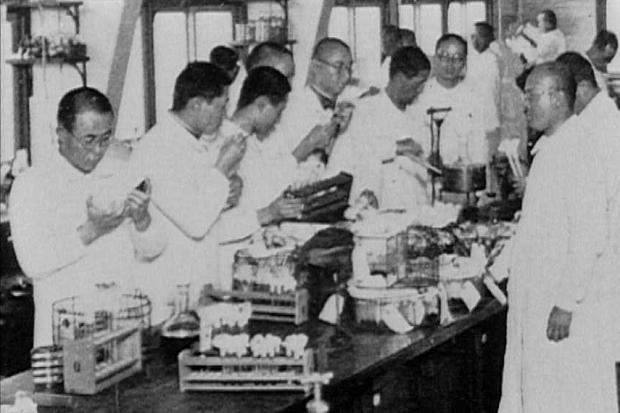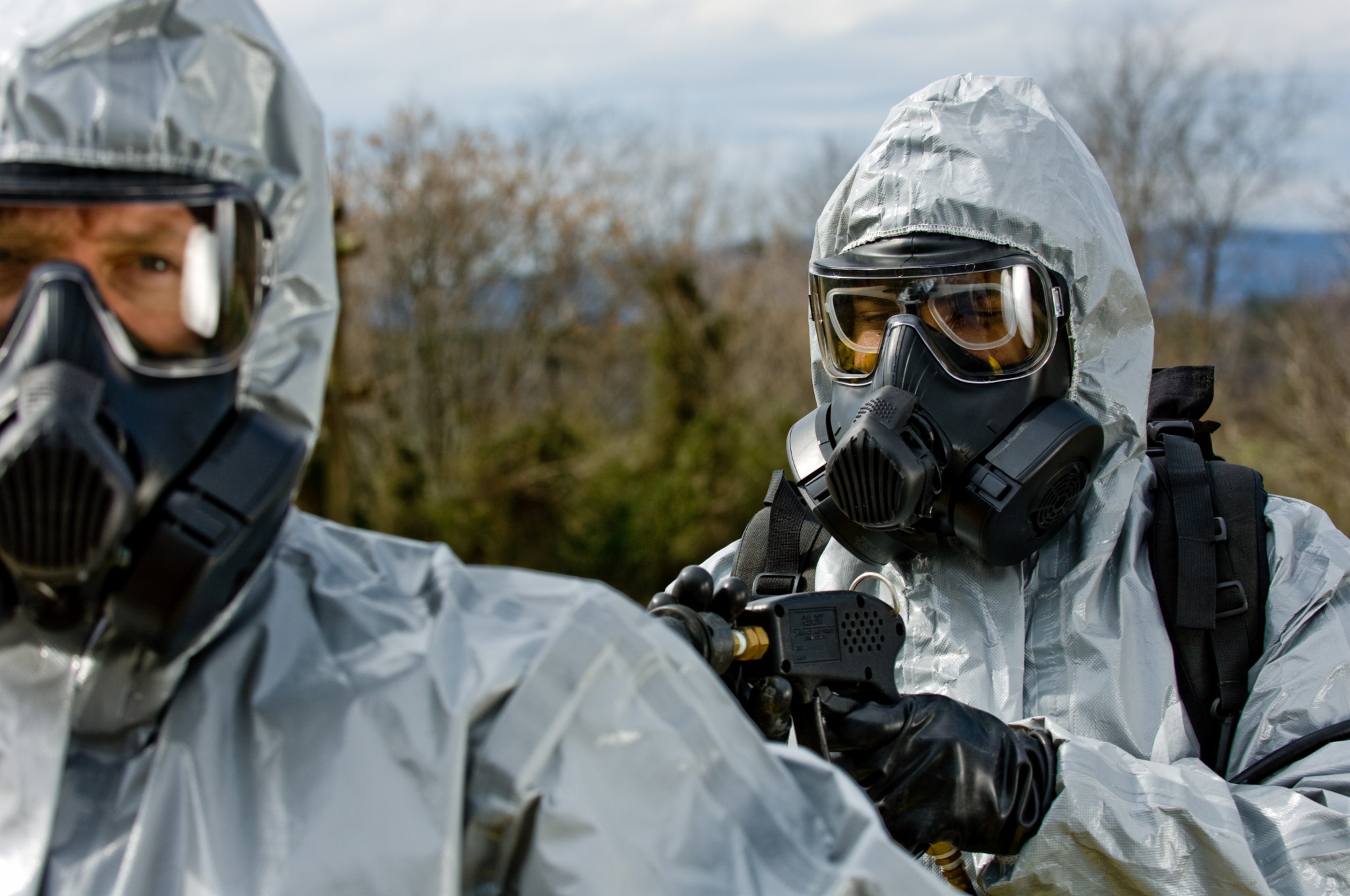The most horrific moments in the world’s history have been a result of human experimentation. The idea of a human’s body being damaged and lost purely for the sake of gathering information, or even worse, to discover more ruthless warfare techniques, is one that we don’t think about in the modern world. And yet it happens even now in the North Korean labour camps.
Featured Image VIA
There was a time of course when human experimentation was more prolific, particularly during World War 2 (we’ve all heard about the inhumane Nazi experiments). One of the lesser known atrocities of this period was committed by the Imperial Japanese Army’s Unit 731 – a biological research centre set up in spite of the Geneva Protocal of 1925, which banned biological and chemical warfare.
Led by the psychopathic Lieutenant-General Ishii Shiro, this centre was run by 3,000 Japanese researchers at its headquarters in Harbin. It was set up in 1938 in Japanese occupied China with the aim of creating biological weaponry. What happened within these walls was nothing short of hell on earth. Historians estimate that up to 250,000 men, women and children were subjected to vile experimentation at the camp. Many of the victims who died here were Chinese, while a small percentage were Russian, Mongolian and Korean. Not one of the prisoners who entered the Unit’s doors made it out alive.
For more than four decades, the sinister secrets of Unit 731 remained one of the most strictly covered up secrets of the Second World War. Before Japan’s surrender, the site of Unit 731 had to be destroyed. During the wipeout, the remaining 400 prisoners were shot dead and the employees were forced to swear secrecy. And if that weren’t sinister enough, instead of being tried for war crimes, the researchers involved in Unit 731 were given immunity by the U.S. in exchange for the information they had gathered during their tests.
It was not until 1984 that Japan acknowledged the truly horrific atrocities that occurred in the camp, and yet even to this day, although many of the research methods have been revealed, some of the details of this unit’s activities are still uncovered. While we can’t report on those that remain a secret, we can describe to you what experiments we do know about:
Frostbite testing
Let’s start with one of the most sinister, shall we? One of the ways that psychologists conducted experiments was to take prisoners outside in the freezing cold weather, dip various body parts in water and force them to freeze. An account from one Japanese officer said that this:
Was determined after the frozen arms, when struck with a short stick, emitted a sound resembling that which a board gives when it is struck.
Ice was then chipped away and the area was covered again in water. In other gruesome accounts, the captives were bludgeoned to determine if any areas were still frozen. If you’re having difficulty imagining this, just check out this torture scene from the movie about Unit 731 titled ‘Man Behind The Sun’:
https://www.youtube.com/watch?v=blI1CLco4W4
Vivisection

Image VIA
For those of you who don’t know, vivisection is surgery conducted for experimental purposes, usually to view the living internal structure. In the case of Unit 731, thousands of men, women and children were subjected to this surgery, often without any anesthesia and usually ending with their death. They were usually performed on the victims after they had been infected with diseases in order to study the effects.
In other cases, prisoners had their limbs removed to study the effects of blood loss, while others had their limbs frozen and then thawed, to look at the results of untreated gangrene and rotting. Here’s one account given by an anonymous medical assistant in the camp:
The fellow knew that it was over for him, and so he didn’t struggle when they led him into the room and tied him down. But when I picked up the scalpel, that’s when he began screaming. I cut him open from the chest to the stomach, and he screamed terribly, and his face was all twisted in agony. He made this unimaginable sound, he was screaming so horribly. But then finally he stopped. This was all in a day’s work for the surgeons, but it really left an impression on me because it was my first time.
You just can’t even imagine the suffering and pain endured by these poor victims.
STDs and forced pregnancy

Image VIA
The idea of orchestrated STD infection has been used in many human experimentation incidents, and in the case of Unit 731, this was no different. Doctors would force sex acts between infected and non-infected prisoners to transmit syphilis. One prison guard wrote:
Infection of venereal disease by injection was abandoned, and the researchers started forcing the prisoners into sexual acts with each other. Four or five unit members, dressed in white laboratory clothing completely cover the body with only eyes and mouth visible, handled the tests. A male and female, one infected with syphilis, would be brought together in a cell and forced into sex with each other. It was made clear that anyone resisting would be shot.
The genitals of the women who were infected were called “jam filled buns” by the guards. And guess what happened once prisoners appeared to have caught the disease? That’s right – they were vivisected.
And that’s not the worst of it. Some of the female prisoners were forced to become pregnant for the use in experiments; in particular they wanted to test fetal survival and damage to the mother’s organs when infected with syphilis. Here’s one horrific account from a unit member who worked as a guard that describes the reality of the sex crimes that went down in this camp:
One of the former researchers I located told me that one day he had a human experiment scheduled, but there was still time to kill. So he and another unit member took the keys to the cells and opened one that housed a Chinese woman. One of the unit members raped her; the other member took the keys and opened another cell. There was a Chinese woman in there who had been used in a frostbite experiment. She had several fingers missing and her bones were black, with gangrene set in. He was about to rape her anyway, then he saw that her sex organ was festering, with pus oozing to the surface. He gave up the idea, left, and locked the door, then later went on to his experimental work.
Germ warfare

Image VIA
Of course, one of the key reasons prisoners were tested at Unit 731 was to look at the effects of disease. In many of the experiments, prisoners were injected with diseases disguised as vaccinations to study the effect of untreated infections such as gonorrhea.
They also tested, developed and created biowarfare weaponry that was used in its assaults against the Chinese. Plague fleas, infected clothing and infected supplies enclosed in bombs were dropped on various targets. Japanese researchers performed tests on prisoners with Bubonic plague, cholera, smallpox, botulism, and other diseases. This research led to the development of the defoliation bacilli bomb and the flea bomb used to spread bubonic plague.
–
You might think that we have outlined quite possibly the most tortuous experiments ever conjured up by this one sadistic prison camp and yet, there were dozens of other experiments not mentioned including weapon testing, where humans were used to test grenades, starvation, enforcement into high-pressure chambers, the effects of burns and some prisoners were even buried or burned alive. As said, this wasn’t all that happened within the walls of Unit 731… it doesn’t bear thinking about that there are even some experiments that were worse than those listed above.
It’s a truly horrific and atrocious moment in the history of World War 2 and an example of how hideous human nature can grow when faced with warfare. If reading this has put you on edge and you need a little faith restored in humanity, just check out the Alan Watts Philosophy. That’ll sort you out, promise.















